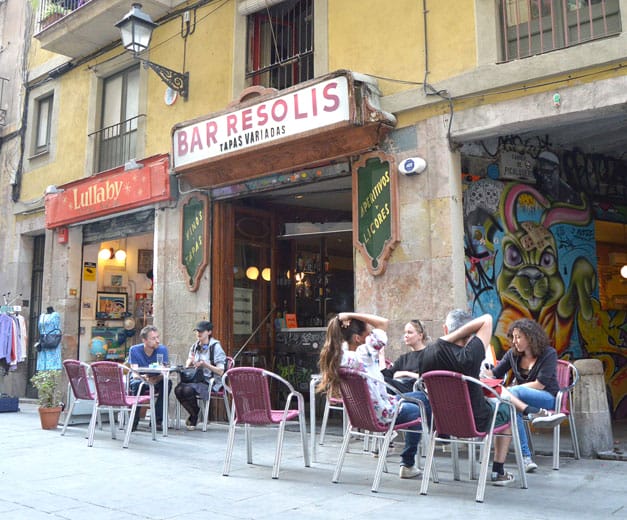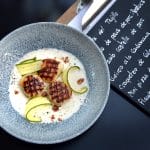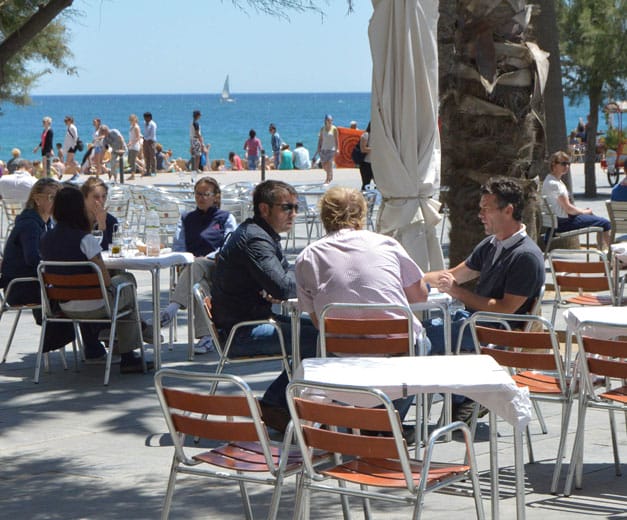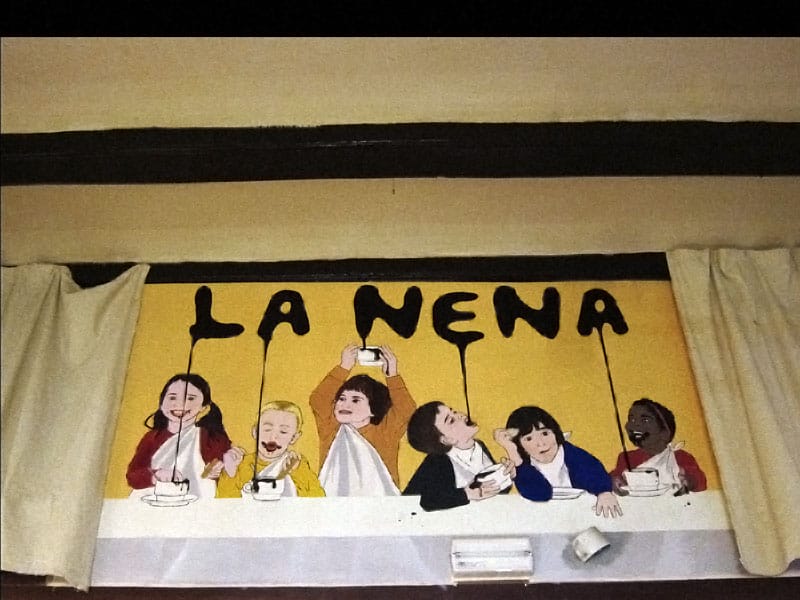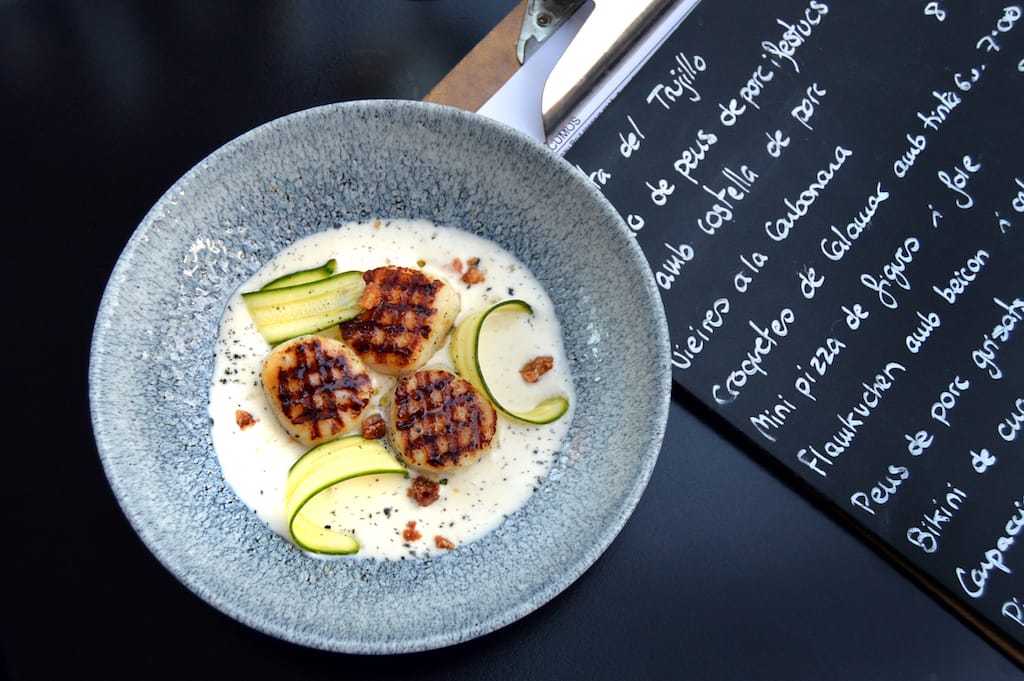In Barcelona, these are fortunate times we’re living in, gastronomically speaking. We’re blessed with a growing multitude of tapas bars whose humble appearances belie the excellent culinary chops behind them. Bar Resolís is one of these. The eatery is known mainly because of its location in the heart of Raval, the most multicultural neighborhood in Barcelona. It sits on a street lined with vintage clothing shops and is outfitted with a cute mini-terrace, a small open bar and windows that frame a wall full of colorful graffiti in the passageway adjacent. It’s the ideal laid-back setting for us to enjoy a vermut with our elbow on the sill while checking out the intriguing handbags in the shop window in front.
Behind the bar you’ll find Louis Crime, the smiling French guy who manages the place, and Bernardo Santarelli, a Barcelonan originally from Argentina and the mastermind behind its wonderful menu of tapas and platillos. When Santarelli bought the place in 2006, it already had more than a hundred years of history behind it as the barrio tapas joint. He decided to keep it as it was, maintaining its old-school style, with some minimal updating just to give the place more light and to make the room more comfortable.
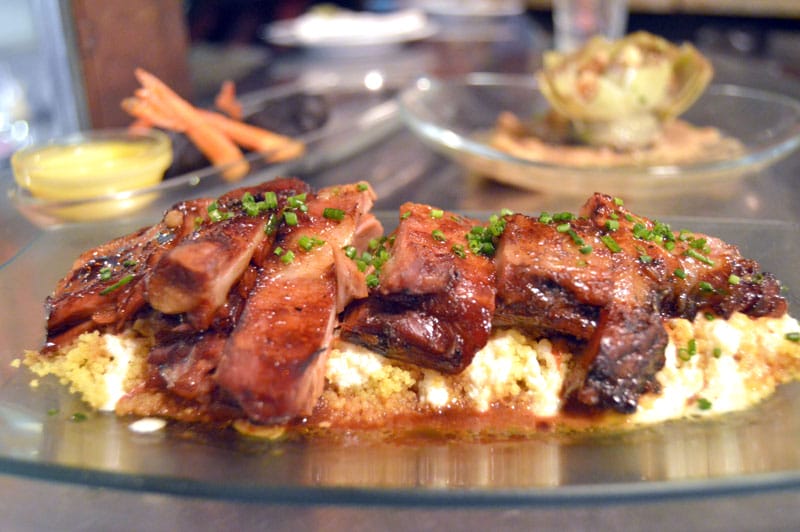
And a barrio tapas bar it has remained, without pretensions and with a clientele of regulars, mostly young locals and visitors from abroad. For many, Resolís is the perfect after-work meeting place and, as an added bonus, offers local music acts and art events throughout the month.
The menu features Mediterranean tapas and inventive small dishes – the platillos – made using fresh ingredients from La Boquería market. There are those classics that are pretty much required in every Spanish bar, such as the patatas bravas and the Spanish tortilla, as well as a variety of interesting seasonal options. The kitchen has a wide geographical range, navigating a sea of Catalan-Spanish tradition but dropping anchor on shores that are Japanese, Italian, Argentinean and Arab. It’s a bright reflection of the neighborhood’s multifaceted character.
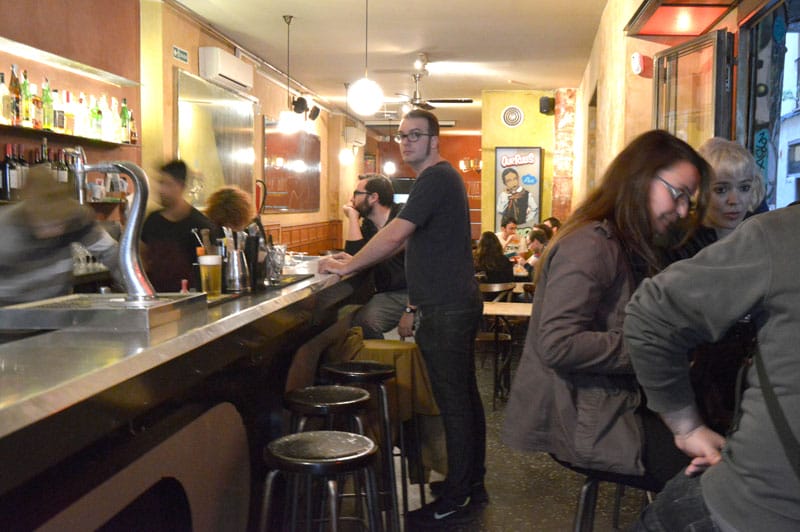
Our favorites include cod brandada, a traditional Catalan-Occitan specialty of salt cod whipped with olive oil to a creamy consistency and served with piquillo (red pepper) sauce; the deeply flavorful langoustine tempura, tinted black with squid ink and with saffron allioli (garlic mayonnaise) for dipping; and the meltingly tender and juicy confited lamb with couscous and yogurt sauce made bright with a lashing of citrus. Perhaps the most exciting item on the spring menu is the artichokes, which are first boiled and then marinated in olive oil with bay leaves and then served with a creamy walnut sauce and a garnish of the chopped nuts.
It’s this kind of thoughtful cooking and the attention paid to both old and new ways of doing things that make eating in Barcelona so exciting these days. We feel very lucky indeed.
Editor’s Note: We are sorry to report that Resolis is closed.
Published on May 27, 2014
Related stories
June 5, 2014
BarcelonaThe favorite outdoor pastime of most Barcelonans is eating and drinking on a terrace. From the simplest bars to the most sophisticated, multi-starred alta cocina restaurants, something like half of our fair city’s eateries have space where diners can enjoy their meals a la fresca (and smoke a cigarette, too). Many of the best-known terraces…
April 16, 2013
Barcelona | By Johanna Bailey
BarcelonaDear Culinary Backstreets, We will be visiting Barcelona with our children. Do you have any good recommendations of places in the city to eat with kids? First of all, you should know that in Spain, you are welcome with children in just about any dining establishment. Because Spaniards don’t tend to entertain much in their…
January 17, 2020
BarcelonaA former village annexed to Barcelona in 1897, the city’s Sant Andreu district was a center of industrial development throughout the 20th century, becoming home to a large population of factory workers. Today, it is a quiet residential area that feels caught between its Catalan village roots and industrial past, with buildings being renovated and…







































